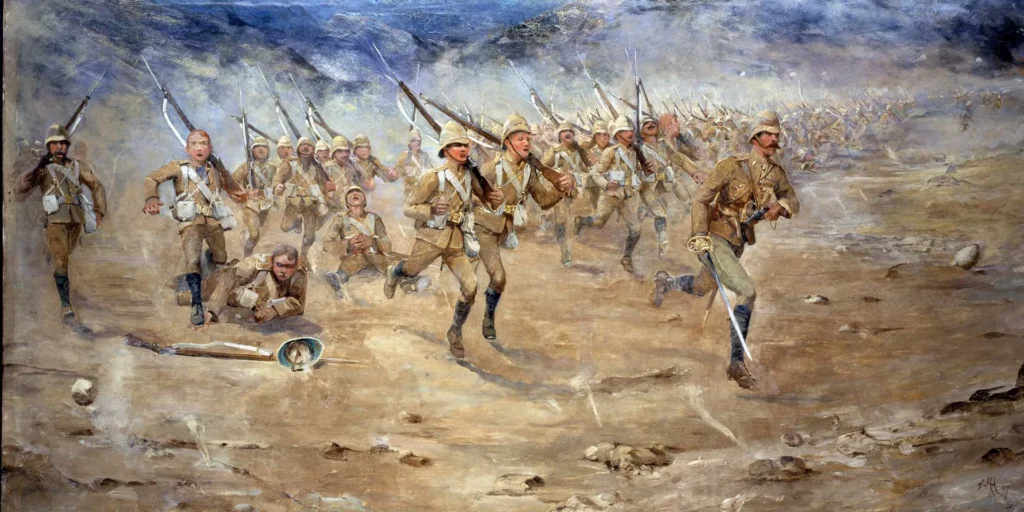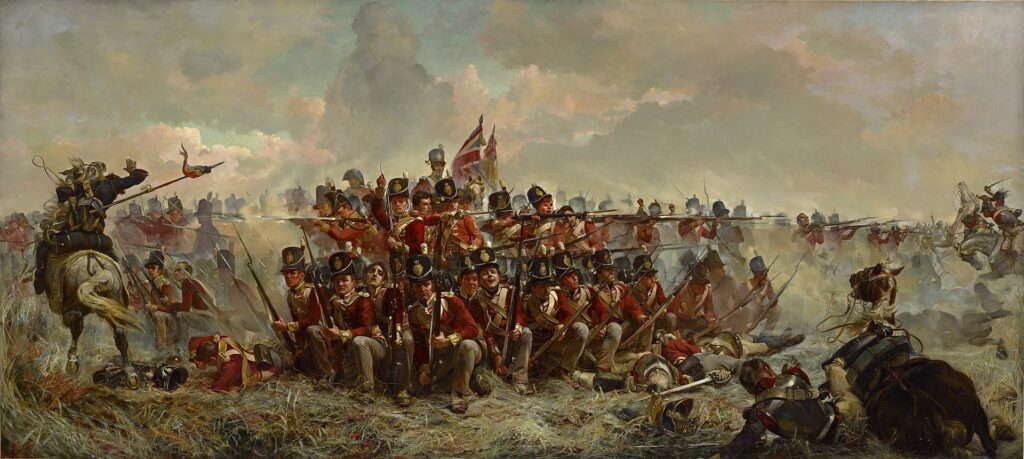
The Gloucestershire Regiment, affectionately known as “The Glosters,” is a historic British Army infantry regiment with a distinguished lineage dating back to 1694. Over its long and illustrious history, the regiment earned a reputation for extraordinary courage and resilience, making significant contributions to numerous conflicts across the globe, including the War of the Spanish Succession, the Napoleonic Wars, the Crimean War, the two World Wars, and the Korean War. This essay explores the Glosters’ history, examining their evolution, famous engagements, and the legacy they left behind in the annals of British military history.
Origins and Early Years
The Gloucestershire Regiment traces its origins to the formation of Colonel John Gibson’s Regiment of Foot in 1694, which was later known as the 28th Regiment of Foot. Originally raised to protect the interests of William III during the Nine Years’ War, the regiment was part of the British Army’s early efforts to build a professional standing force. Over time, this regiment evolved through mergers and reorganizations, notably in 1881 when the 28th merged with the 61st Regiment of Foot (South Gloucestershire) to become the Gloucestershire Regiment.
The Glosters’ emblem, featuring a back badge worn on the rear of the cap, is a unique distinction in the British Army. This badge symbolizes the regiment’s involvement in the Battle of Alexandria during the Napoleonic Wars, where the 28th Regiment famously fought off French forces attacking from both front and rear, earning the right to wear badges on both sides of their headdress. This tradition of valor under pressure became central to the Glosters’ identity.
Service in the Napoleonic Wars

During the Napoleonic Wars (1803–1815), the Glosters played a key role in several battles, gaining a reputation as one of Britain’s toughest regiments. Their service in the Peninsular War (1808–1814) under the Duke of Wellington was particularly notable. At the Battle of Talavera in 1809, the 28th Regiment displayed remarkable discipline and bravery, holding their position against repeated French assaults.
Perhaps the most famous episode of the Glosters’ service during the Napoleonic Wars was their participation in the Battle of Waterloo in 1815. The 28th Foot, part of General Sir Thomas Picton’s 5th Division, was positioned near the center of Wellington’s line. Facing Napoleon’s Imperial Guard, the regiment’s steadfastness contributed to the eventual Allied victory, solidifying their reputation as an elite fighting force.
The Crimean War and the Victorian Era
In the mid-19th century, the Glosters once again found themselves on the battlefield, this time during the Crimean War (1853–1856). The regiment took part in the Siege of Sevastopol, a protracted and grueling campaign that tested the mettle of the British Army. The Glosters’ participation in this siege, along with their involvement in other key engagements like the Battle of Alma and the Battle of Inkerman, reinforced their reputation for resilience and tenacity.
The Victorian era was a time of expansion for the British Empire, and the Glosters were frequently deployed overseas. During the Indian Rebellion of 1857, the regiment played a significant role in the suppression of the uprising. Their service in the harsh conditions of India showcased the adaptability and professionalism of the British soldier, and the regiment’s exploits during this period were widely recognized.
The First World War
The outbreak of World War I in 1914 saw the Gloucestershire Regiment deployed to the Western Front, where they were involved in some of the most horrific battles of the conflict. The regiment raised multiple battalions for service during the war, many of which were decimated in the trench warfare that came to define the conflict.
At the Battle of the Somme in 1916, the Glosters were heavily involved in the initial assaults, suffering catastrophic losses. Despite this, they continued to fight with determination, exemplifying the stoic endurance for which the British infantry became known during the war. The regiment’s involvement in the Battle of Passchendaele in 1917 was equally grueling, as they faced relentless artillery bombardment, mud, and gas attacks. By the war’s end, the regiment had suffered tremendous casualties, but their contribution to the Allied war effort was undeniable.
The Second World War
The Glosters were again called to arms in World War II, where they served in several theaters of operation. One of their most famous actions came during the retreat to Dunkirk in 1940, where the 2nd Battalion helped cover the British Expeditionary Force’s withdrawal from France. Their discipline and determination under fire helped ensure that many British troops could evacuate safely.
Later in the war, the Glosters were involved in the Italian campaign, particularly at the bloody Battle of Monte Cassino in 1944, where they fought with distinction. As part of the British Eighth Army, they also participated in the liberation of the Netherlands and fought their way into Germany, contributing to the eventual defeat of Nazi forces in Europe.
The Korean War and the Battle of Imjin River
The Gloucestershire Regiment’s most famous engagement came during the Korean War (1950–1953), at the Battle of Imjin River in April 1951. As part of the United Nations forces fighting against Chinese and North Korean troops, the 1st Battalion found itself isolated and surrounded by vastly superior enemy numbers. Over the course of three days, the Glosters fought with incredible tenacity, holding off the Chinese forces and inflicting heavy casualties.
Despite being vastly outnumbered and cut off from reinforcements, the regiment fought to the last, with many of its soldiers being killed or taken prisoner. Their bravery during the battle earned the Glosters international recognition, and the battalion was awarded a Presidential Unit Citation by the United States—an extremely rare honor for a non-American unit.
The Battle of Imjin River is one of the most celebrated actions in British military history, and the Glosters’ steadfastness and courage in the face of overwhelming odds became a symbol of the British Army’s fighting spirit.
Amalgamation and Legacy
In the latter half of the 20th century, as part of the British Army’s restructuring, the Gloucestershire Regiment was amalgamated with other units. In 1994, the regiment merged with the Duke of Edinburgh’s Royal Regiment to form the Royal Gloucestershire, Berkshire and Wiltshire Regiment. This amalgamation was part of a broader trend of reducing the size of the British Army while maintaining the traditions of its historic regiments.
Though the Gloucestershire Regiment no longer exists as an independent entity, its legacy lives on in the regimental museum and in the annals of British military history. The regiment’s long and distinguished service, particularly its heroic stand at the Battle of Imjin River, continues to inspire new generations of soldiers.
Conclusion
The Gloucestershire Regiment is one of the most celebrated regiments in British military history, with a legacy of courage, resilience, and professionalism that spans over three centuries. From its early days during the Nine Years’ War to its heroic stand at Imjin River during the Korean War, the Glosters exemplified the highest standards of military service. Their unique traditions, such as the back badge, and their numerous battle honors ensure that their contributions to British history will not be forgotten. The Glosters’ story is one of extraordinary bravery, and their place in the pantheon of British military regiments is well-deserved.